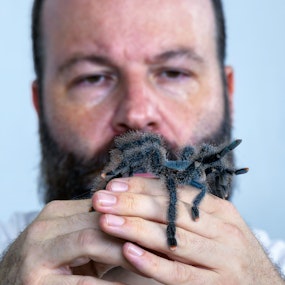Hurricane Maria, a category four hurricane, struck Puerto Rico on September 20, 2017, causing widespread devastation and leaving the island without power, clean water, and proper sanitation for months. The aftermath of the hurricane created the perfect conditions for the outbreak of waterborne diseases, including leptospirosis, a bacterial infection caused by the Leptospira bacterium. In this article, we will explore the impact of Hurricane Maria on Puerto Rico, the factors contributing to the outbreak of leptospirosis, the public health response and prevention measures, the challenges faced in controlling the outbreak, and the long-term effects and lessons learned from this devastating event.
Leptospirosis is a zoonotic disease that affects both humans and animals. It is primarily spread through contact with water, soil, or food contaminated with the urine of infected animals, such as rats, mice, and livestock. The bacteria can enter the body through cuts or skin abrasions or mucous membranes such as the eyes, nose, or mouth. Once inside the body, the bacteria can cause many symptoms, from mild flu-like symptoms to severe complications such as liver and kidney failure.
An example of the impact of leptospirosis can be seen in the aftermath of Hurricane Maria in Puerto Rico. The hurricane caused widespread flooding, increasing the rodent population and contamination of water sources. As a result, individuals who came into contact with contaminated water or engaged in activities that put them at risk of exposure, such as cleaning up debris or working in agricultural settings, were more susceptible to contracting leptospirosis. The lack of access to clean water and proper sanitation further exacerbated the spread of the disease, making it a significant public health concern.
Impact of Hurricane Maria on Puerto Rico
Hurricane Maria left a trail of destruction in its wake, causing an estimated $90 billion in damages and leaving the island without power for months. The hurricane's strong winds and torrential rainfall caused widespread flooding, damaging homes, infrastructure, and the island's water supply. The destruction of the water treatment plants and the contamination of water sources increased the risk of waterborne diseases, including leptospirosis.
According to a report, an ongoing islandwide outbreak of leptospirosis was reported in Puerto Rico in January. From January 1 to October 8, 226 cases were reported, with 22 confirmed, 38 probable, and 166 suspected cases. The most affected region was Caguas, followed by Mayaguez, Metropolitana, and Ponce. The increase in cases was attributed to Hurricane Fiona, which caused flooding and created ideal conditions for the outbreak of leptospirosis. It is important to note that no cases were reported in Puerto Rico in 2021, indicating that the outbreak was directly linked to the aftermath of Hurricane Maria.
The example of Puerto Rico highlights the vulnerability of communities in disaster-affected areas to outbreaks of infectious diseases. The lack of essential services, such as clean water and sanitation facilities, coupled with overcrowded living conditions in emergency shelters, creates an environment conducive to the spread of waterborne diseases like leptospirosis. The impact of Hurricane Maria serves as a stark reminder of the importance of disaster preparedness and the need for robust public health systems to respond effectively to such emergencies.
Factors Contributing to the Outbreak
Several factors contributed to the outbreak of leptospirosis following Hurricane Maria. The high levels of flooding caused by the hurricane led to an increase in the rodent population, as their habitats were destroyed. This, in turn, increased the risk of exposure to leptospirosis through contact with contaminated water or soil. Individuals who worked outdoors near animals or in agricultural settings, such as farmers and livestock handlers, were particularly vulnerable to the disease.
For example, a farmer in Puerto Rico contracted leptospirosis while cleaning up debris after Hurricane Maria. The farmer, who had a cut on his leg, came into contact with contaminated floodwater while working in his field. As a result, he developed symptoms of leptospirosis a few days later, including fever, muscle aches, and nausea. This case highlights the importance of personal protective measures, such as wearing gloves and boots, when working in flood-damaged areas to prevent infection.
Household exposure to contaminated drinking water or surfaces contaminated by rodents also played a significant role in the outbreak. In the aftermath of Hurricane Maria, many households had limited access to clean water, leading to increased reliance on alternative water sources, such as rivers or wells, which may have been contaminated with the bacteria. Additionally, the destruction of homes and infrastructure allowed rodents to seek shelter in human dwellings, increasing the risk of exposure to leptospirosis.
Strict hand hygiene measures, such as washing hands with soap and clean water, prevent leptospirosis infection. This simple yet effective preventive measure can significantly reduce the risk of transmission and should be emphasized in post-disaster situations.
Public Health Response and Prevention Measures
In response to the outbreak of leptospirosis, public health authorities in Puerto Rico implemented various measures to prevent the spread of the disease. They focused on raising awareness among the public about the risks of waterborne diseases and the importance of practicing good hygiene, such as handwashing. Educational campaigns were conducted to inform the population about the symptoms of leptospirosis and the need to seek medical attention if they developed any of these symptoms.
Additionally, public health authorities distributed free water filters to households without access to clean water. This initiative aimed to reduce the reliance on alternative water sources that may be contaminated with the bacteria. In addition, efforts were made to restore the water treatment plants and improve the water supply infrastructure to ensure the delivery of safe drinking water to the population.
Early detection and prompt treatment of leptospirosis cases were priorities in the response efforts. Medical professionals were trained to recognize the disease's symptoms and conduct diagnostic tests to confirm the diagnosis. Treatment guidelines were established to ensure that patients received appropriate care and that the disease was effectively managed.
Increased surveillance and prevention efforts were also implemented to control the disease. This included monitoring the number of cases, investigating potential sources of infection, and implementing targeted interventions to reduce the transmission of the bacteria. The collaboration between public health authorities, healthcare providers, and the community was crucial in implementing these measures and preventing further spread of the disease.
According to a CNN report, the Puerto Rico mortality database listed 26 deaths attributed to leptospirosis six months after Hurricane Maria, more than twice the previous year's number. However, until June 22, the Puerto Rico Health Department only attributed four leptospirosis deaths to Hurricane Maria, and after questions from reporters, they added two more. The Hurricane Maria death toll has come under scrutiny, with investigations suggesting that 793 to 8,498 people died for reasons related to the hurricane. Epidemiologists and medical experts argue that Puerto Rico should have declared an "epidemic" or an "outbreak" of leptospirosis after Hurricane Maria, as it could have helped trigger increased surveillance and prevention efforts for the disease.
Challenges in Controlling the Outbreak
Controlling the outbreak of leptospirosis after Hurricane Maria posed several challenges. The widespread destruction caused by the hurricane disrupted the healthcare system, making it difficult to provide timely and adequate medical care to those affected by the disease. The lack of access to healthcare facilities, medical supplies, and trained healthcare professionals compounded these challenges.
Delays in testing and using different diagnostic tests after the hurricane made it challenging to accurately identify and diagnose leptospirosis cases. The destruction of laboratories and the limited availability of diagnostic tools hindered the timely detection of the disease and the implementation of appropriate treatment. As a result, many cases may have gone undiagnosed or misdiagnosed, leading to delays in patient care and the potential for further transmission of the bacteria.
According to an advisory from the Advisory Board, deaths from bacterial diseases in Puerto Rico increased after Hurricane Maria, with leptospirosis listed as the cause of death on 26 death certificates. This represents more than double the number of leptospirosis deaths in the previous year. Experts believe there was a leptospirosis epidemic in Puerto Rico after the hurricane. However, Puerto Rico did not officially declare an epidemic due to delays in testing and the use of different diagnostic tests after the hurricane. The timeframe used to determine hurricane-related deaths may have underestimated the actual number of cases, as leptospirosis symptoms can take weeks to appear, and physicians often misdiagnose cases of the disease.
The example of Puerto Rico highlights the importance of disaster preparedness and the need for robust healthcare systems that can withstand and respond effectively to natural disasters. It is crucial to ensure that healthcare facilities have the resources and infrastructure to provide timely and appropriate care in post-disaster situations. This includes having backup power sources, adequate medical supplies, and trained healthcare professionals who can quickly respond to the needs of the affected population.
Long-Term Effects and Lessons Learned
The leptospirosis outbreak following Hurricane Maria had long-term effects on Puerto Rico's public health infrastructure and resources. The destruction caused by the hurricane strained the healthcare system, leading to a shortage of medical personnel and limited access to healthcare services. The outbreak also highlighted the need for improved surveillance systems and diagnostic capabilities to detect and respond to outbreaks of infectious diseases more effectively.
The example of Puerto Rico serves as a lesson for other disaster-affected areas, emphasizing the importance of preparedness and response to waterborne diseases. It is crucial to have robust public health systems that can quickly respond to outbreaks and implement effective prevention and control measures. This includes raising awareness among the population about the risks of waterborne diseases and promoting good hygiene practices, such as handwashing and safe water storage.
The outbreak of leptospirosis following Hurricane Maria also highlighted the need for collaboration and coordination between different sectors, including public health authorities, healthcare providers, and the community. By working together, it is possible to implement timely and targeted interventions that can help control the spread of the disease and minimize its impact on the affected population.
According to the same advisory from the Advisory Board, the leptospirosis outbreak in Puerto Rico had a significant impact on the island's public health infrastructure and resources. The outbreak strained the already fragile healthcare system, leading to a shortage of medical personnel and limited access to healthcare services. The destruction caused by the hurricane highlighted the need for improved surveillance systems and diagnostic capabilities to detect and respond to outbreaks of infectious diseases more effectively.
The long-term effects of the leptospirosis outbreak have served as a wake-up call for Puerto Rico and other disaster-prone areas. The outbreak highlighted the importance of disaster preparedness and the need for robust public health systems that can withstand and respond effectively to natural disasters. It also emphasized the need for continued efforts in prevention, surveillance, and response to similar outbreaks in the future.
Conclusion
The outbreak of leptospirosis following Hurricane Maria in Puerto Rico underscored the risks of waterborne diseases in disaster-affected areas. The destruction caused by the hurricane, including widespread flooding and the contamination of water sources, created the perfect conditions for the spread of leptospirosis. Understanding the factors contributing to the outbreak and implementing effective prevention measures are crucial in mitigating the impact of such diseases.
Public health authorities in Puerto Rico responded to the outbreak by implementing awareness campaigns, distributing water filters, and improving surveillance and diagnostic capabilities. However, the challenges posed by the destruction caused by the hurricane and the limited resources available made it difficult to control the outbreak effectively.
The example of Puerto Rico serves as a reminder of the importance of disaster preparedness and the need for robust public health systems in post-disaster situations. Continued efforts in prevention, surveillance, and response are necessary to protect public health and prevent the recurrence of similar outbreaks in the future. By learning from the experiences of Puerto Rico, we can better prepare for and respond to outbreaks of waterborne diseases in disaster-affected areas, ultimately saving lives and minimizing the impact on communities.










